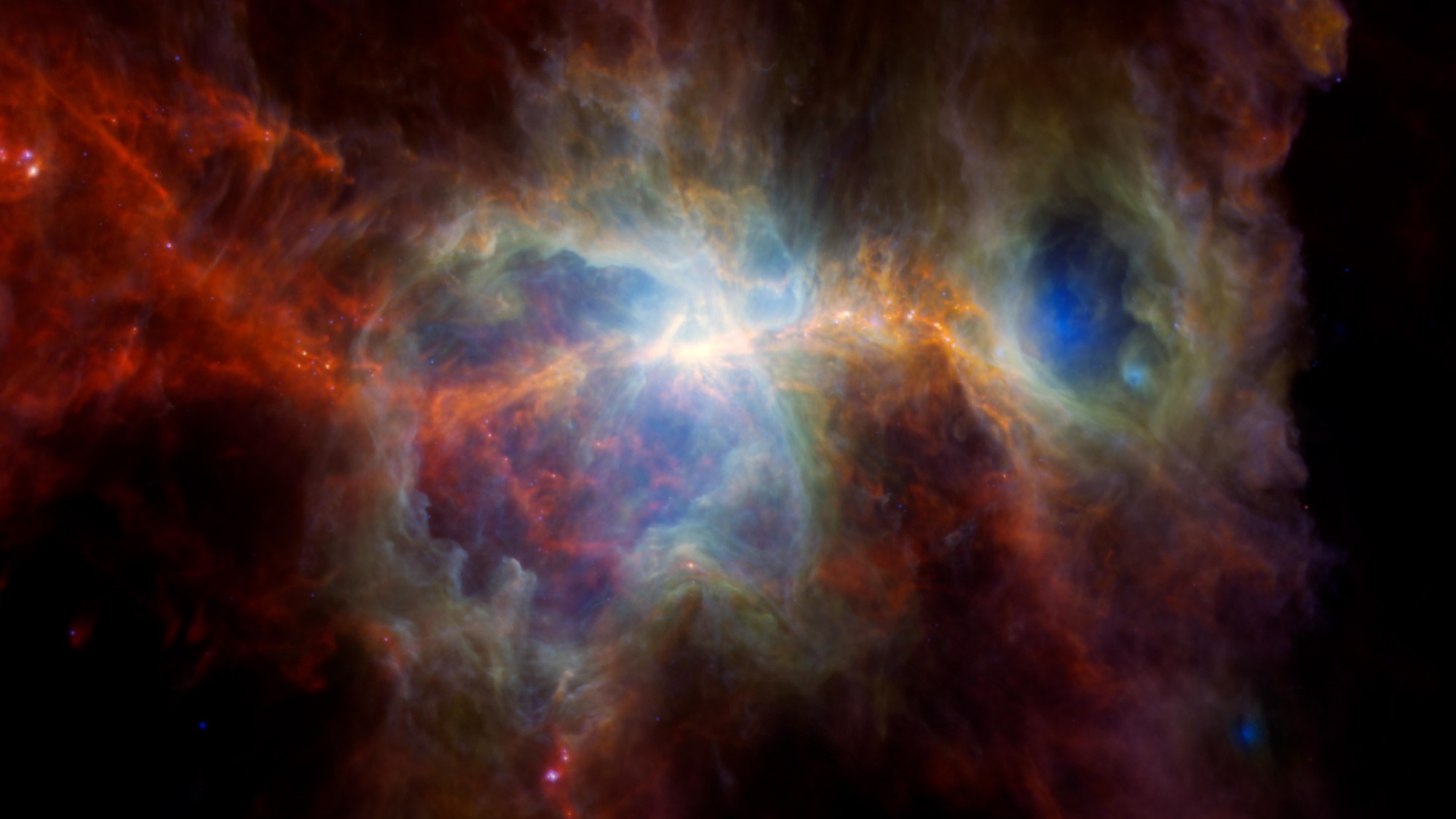
ESA & NASA revealed the modified image of Orion Nebula's fairy tale of death and rebirth
However, because of the operation of extremely sophisticated telescopes like the Hubble or James Webb in the present period, NASA and ESA have never missed anything in the sky. Orion is being observed by these two space giants since their inception to explore the formation of stars and planets within the nebula. They have constructed images out of collected data and came up with the stunning revelation of the dramatic death and rebirth of stars within its cosmic belt. The data was collected by NASA's now-retired Spitzer Space Telescope; present Wide-Field Infrared Survey Explorer, newly named NEOWISE; and European Space Agency's retired Herschel Space observatory.
The nebula has been named after the Greek mythological hunter who was killed by the sting of a scorpion. The runaway stars AE Aurigae, 53 Arietis, and Mu Columbae, which are currently ejecting from the nebula at speeds greater than 100 km/s (62 mi/s), may have lived within the Orion Nebula cluster two million years ago. A very young open cluster found in the Orion nebula known as Trapezium Cluster, this small cluster within the nebula consists of 4 stars with a diameter of 1.5 lightyears. The Trapezium cluster is part of a large nebula consisting of approximately 2800 stars with a diameter of 20 light years. From this, we can determine that the Orion cluster is around 40 light-years long.
Within the star formation region, there are two caverns carved out by giant stars, which in the picture are also covered in heavy dust. As these massive stars emit radiation that is a million times stronger than the radiation of the sun, this radiation breaks apart the dust grains, creating the giant voids that create the nebula. The remaining dust is whittled away from the stars and nebula itself, this happens when a massive star dies.
In the picture around the edge of the two cavernous regions, dust of different colors is being appeared and different colors is indicating the level of temperature and region where stars are dying and taking birth. Red indicates cold dust that reached temperatures of about -440 Fahrenheit. The red and green lights show data from the newly retired Herschel space telescope observatory that captured wavelengths of light in the far-infrared and microwave ranges, where cold dust radiates. The cold dust appears mostly on the outskirts of the dust cloud, away from the regions where stars form. In between the two hollow regions are orange filaments where dust condenses and forms new stars. Over time, these filaments may produce new giant stars that will once again reshape the region. The newly formed star will be going to eliminate a tremendous amount of cosmic radiation blasting away a million tonnes of material out of its own that was responsible for its own birth. Eventually, the new star will die and open the path for the formation of new stars out of the fertile ground that was plowed by a once-healthy star. So, this is how stars are born out of supernovas and this is how a new solar system is born out of the dust cloud within the supernova. the universe is full of such examples.
The success of today's image is entirely going to the 17 years of struggle by the Spitzer Space Telescope. The Spitzer examined exosolar planets' temperatures, discovered a giant ring around Saturn, and assisted in spotting some of the most distant galaxies of the universe. The credit also goes to the WISE spacecraft which was launched in 2009 but was in a frozen state for years, recently it has been renamed NEOWISE after making it operational for further use.
We, humans, are examining our universe and its celestial objects in every possible way we can, for that purpose we first build telescopes and then ground observation stations eventually very expensive space telescopes. Recently our new wonder James Webb is examining the universe to seek the answer to the formation of the Universe. Hopefully one day we will be able to find the answer behind the formation of our universe.
0 Comments